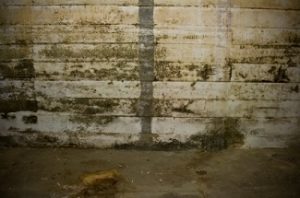Frequent Crawl Space Waterproofing Issues
Jul 06, 2017 Crawl spaces are dark, unfinished, often underground areas that don’t get nearly as much attention as the rest of your home. These conditions make them ideal for fungus growth, especially if you don’t practice proper waterproofing techniques or check your crawl space regularly. Unfortunately, condensation collects even faster than usual in hot, humid Georgia. As mold and mildew build up and spread throughout the hot space, your consequences could range from headaches and breathing problems to severe structural damage.
Crawl spaces are dark, unfinished, often underground areas that don’t get nearly as much attention as the rest of your home. These conditions make them ideal for fungus growth, especially if you don’t practice proper waterproofing techniques or check your crawl space regularly. Unfortunately, condensation collects even faster than usual in hot, humid Georgia. As mold and mildew build up and spread throughout the hot space, your consequences could range from headaches and breathing problems to severe structural damage.
Fortunately, all of these risks are preventable. For example, our crawl space encapsulation service creates an airtight seal to prevent structural damage, energy loss, odors, flooding, and other common consequences of moisture buildup.
However, certain construction choices will compromise an otherwise well-sealed crawl space, ultimately causing expensive, inconvenient, and potentially disastrous household hazards. Prevent unnecessary property damage by avoiding the following four risk factors in your crawl space.
Uncovered or excessive vents
Vents may seem like a good way to prevent moisture buildup, but it’s not that simple in a crawl space. In older homes, most crawl space vents are designed to stay open and circulate air, not dehumidify or eliminate water. During the summer, hot outdoor air may circulate through your cooler indoor spaces, creating condensation and all the risks associated with it. Precipitation also causes problems when vents are left open.
In fact, the U.S. Department of Energy warns that passive crawl space vents are counterproductive additions that retain moisture and heat. They call for exhaust fans and mechanical vents, which work together to ventilate moisture and stabilize air pressure and temperature.
Inadequate drainage
Outdated plumbing is another red flag for crawl spaces, especially those that are underground or behind major plumbing installations. Standing pools of water invite insects to breed and create electrocution hazards, and flooding does irreversible damage to your belongings and support structures.
If your plumbing system doesn’t have an effective drainage system, your pipes may leak or burst to relieve the water pressure. In a large crawl space, such as a basement, there should be a recessed drain on the floor itself that’s capable of draining large amounts of water quickly.
Spray foam insulation
One of the most popular forms of insulation comes in a high-pressure can. This foam expands rapidly to fill tight spaces, so it’s a common choice for wall cavities, roofs, attics, and basements. It’s also one of the most energy-efficient options for walls, because it’s so effective at blocking heat, air, and water. However, the very same properties that make spray foam insulation so effective could actually cause problems in your crawl space.
If you have wood walls or beams, moisture may get trapped between your foam and the wood, causing these support structures to start rotting. If your insulation is open cell foam rather than closed cell, it will absorb water vapor rather than trapping it.
Fiberglass insulation
Fiberglass is another poor choice for crawl space insulation, because it absorbs moisture and traps it in the contained space. Unless you inspect your insulation frequently or schedule regular energy audits, you may not realize it’s a problem until it’s too late. This insulation is designed for use in well-ventilated spaces with exhaust systems that send water vapor outdoors.
Remember: fiberglass isn’t a protective barrier against water, and if water does collect on it, the insulation will actually sponge it up instead.
If you notice any of these problems in your home, contact us to learn more about our basement waterproofing services. Our dedicated specialists will work hard to make sure your crawl space is waterproof and sealed.

